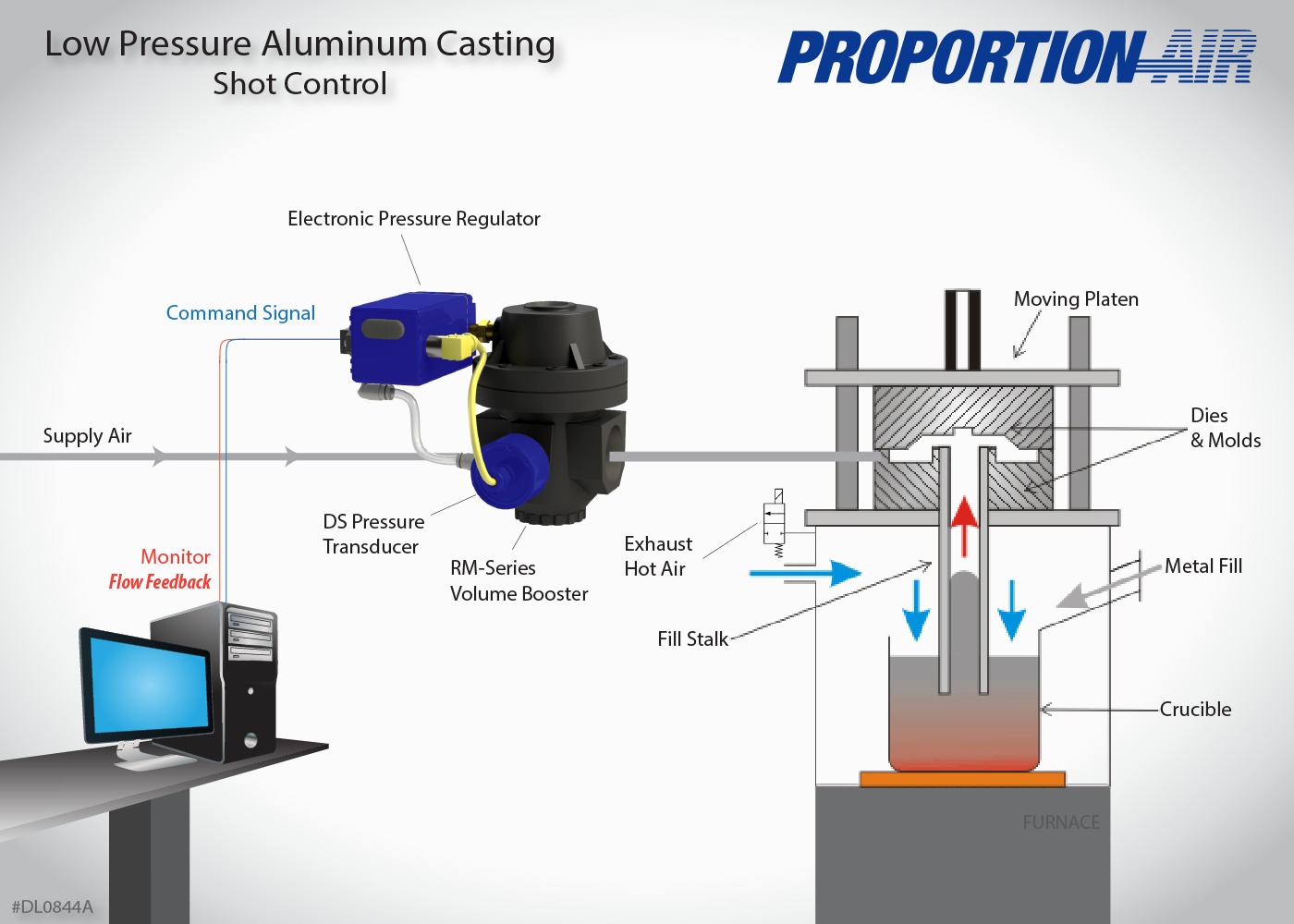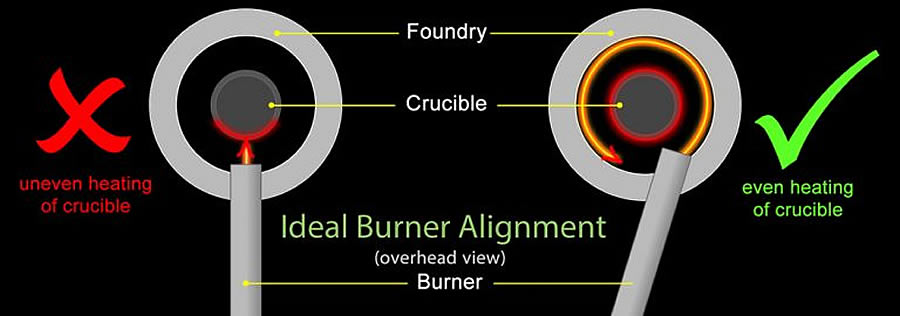When Aluminum Foundry Wisconsin improves casting projects
Wiki Article
Exactly How Aluminum Foundry Adds to Improvements in Aerospace Engineering
Aluminum factories are integral to improvements in aerospace engineering. They produce light-weight, high-strength parts that are vital for contemporary airplane. Through sophisticated spreading methods, these shops create complicated geometries that enhance architectural integrity. In addition, the advancement of superior Aluminum alloys sustains the industry's concentrate on fuel efficiency and sustainability. Obstacles continue to be in the manufacturing procedure. Understanding these factors reveals the extensive influence of Aluminum on aviation's future.The Importance of Lightweight Materials in Aerospace Layout
As the aerospace industry remains to progress, the importance of lightweight materials comes to be increasingly noticeable. The need for efficiency and sustainability drives engineers to prioritize using products that lower general weight without endangering structural integrity. Lightweight materials, especially Aluminum, play an essential role in improving fuel effectiveness, enhancing payload ability, and boosting the general performance of aircraft.Moreover, the integration of these products enables for ingenious designs, making it possible for manufacturers to develop even more wind resistant shapes that can withstand severe problems. The decrease in weight not just decreases operational prices yet likewise contributes to a reduced environmental footprint, lining up with global initiatives towards sustainability in air travel.
Advanced Spreading Techniques in Aluminum Foundries
Advanced spreading strategies in Aluminum shops play a crucial role in aerospace design by allowing the manufacturing of lightweight and precise elements. Technologies in mold and mildew layout and accuracy casting procedures are important in accomplishing suitable efficiency and architectural integrity. In addition, the advancement of lightweight alloys improves the general effectiveness and effectiveness of aerospace applications.Innovative Mold Style
Cutting-edge mold layout plays a necessary role in the performance and performance of Aluminum shops, especially within the aerospace industry. By leveraging advanced materials and techniques, modern-day mold and mildews can be engineered to withstand heats and stress, guaranteeing peak efficiency during the casting process. These styles usually incorporate complicated geometries that permit the production of lightweight yet structurally audio components, important for aerospace applications. In addition, using computer-aided style (CAD) software program facilitates accurate modeling, enabling shops to replicate and refine mold layouts before physical production starts. This not only boosts the quality of actors components however also decreases waste and lead times, bring about substantial cost savings. Generally, cutting-edge mold and mildew layout is a cornerstone of progression in Aluminum Foundry modern technology for aerospace design.Accuracy Casting Procedures
The effectiveness of cutting-edge mold designs flawlessly integrates with accuracy casting processes, which are vital for generating high-quality Aluminum components in aerospace engineering. These processes, including sand casting, pass away casting, and financial investment casting, guarantee the production of complex geometries with limited tolerances. Advanced strategies like vacuum casting and stress die casting improve the stability and surface area coating of the end products. Precision spreading lessens product waste while maximizing the mechanical homes of Aluminum, vital for aerospace applications. In enhancement, employing real-time tracking and advanced simulation devices during the spreading process permits for immediate modifications, bring about boosted quality assurance. Collectively, these accuracy spreading procedures placement Aluminum shops at the leading edge of aerospace development, sustaining the sector's need for integrity and efficiency.Lightweight Alloy Growth
As aerospace engineers look for to enhance fuel efficiency and efficiency, lightweight alloy growth comes to be a crucial emphasis in Aluminum foundries. These foundries use advanced spreading strategies to create alloys that give premium strength-to-weight ratios. Technologies in alloy structure, including the unification of aspects like lithium and magnesium, enable the manufacturing of materials that hold up against severe problems while lowering overall airplane weight. Techniques such as die casting and investment spreading facilitate the accuracy production of complex shapes, which are critical for aerospace applications. Additionally, continuous study aims to optimize these alloys for improved mechanical residential or commercial properties and increased sturdiness. By prioritizing light-weight alloy growth, Aluminum shops considerably add to the development of aerospace engineering, leading the way for much more lasting and effective airplane styles.
Enhancing Architectural Stability With Aluminum Parts
Aluminum components provide considerable benefits in improving structural honesty within aerospace engineering. Their light-weight nature contributes to total efficiency while keeping toughness, which is important for airplane performance. Additionally, the anxiety resistance homes of Aluminum aid guarantee the resilience and integrity of aerospace structures under different functional problems.
Lightweight Material Perks
While conventional products typically endanger weight for toughness, making use of Aluminum parts in aerospace engineering offers substantial benefits in structural stability. Aluminum's light-weight nature contributes to general style efficiency, permitting more streamlined aircraft that eat less gas, consequently enhancing sustainability. The material's excellent strength-to-weight proportion guarantees that parts preserve resilience without adding unnecessary mass. This top quality promotes improved efficiency and agility in trip, as well as optimized payload abilities. Additionally, Aluminum's resistance to deterioration prolongs the life expectancy of aerospace structures, minimizing maintenance expenses and boosting safety. As suppliers progressively take on Aluminum alloys, the aerospace industry experiences a transformative change towards extra effective and effective design remedies that prioritize both efficiency and environmental duty.Anxiety Resistance Features
Various materials possess unique properties, Aluminum's remarkable anxiety resistance stands out as an important aspect in boosting the structural stability of aerospace components. This resistance plays an essential duty in making certain that airplane can endure various functional tensions, including exhaustion, effect, and ecological conditions. Aluminum alloys, specifically engineered for aerospace applications, display high tensile stamina while maintaining light-weight features, allowing engineers to design a lot more efficient structures - Aluminum Foundry. Furthermore, the ability of Aluminum to withstand browse around these guys cyclic loading without significant contortion adds to the durability and reliability of aerospace parts. As innovations proceed in Aluminum Foundry methods, the advancement of stress-resistant Aluminum components assures additional enhancements in efficiency, safety and security, and effectiveness across the aerospace sector, strengthening Aluminum's duty as a preferred product in modern-day engineeringFuel Efficiency Improvements Driven by Aluminum Innovations
As the aerospace industry looks for to enhance gas performance, ingenious uses of Aluminum have actually arised as a crucial service. Aluminum's light-weight nature notably minimizes aircraft weight, enabling for lower fuel usage during trip. This decrease in weight is essential, as also tiny reductions can cause significant improvements in total fuel economic situation.Advanced Aluminum alloys, made for improved toughness and sturdiness, enable suppliers to develop components that maintain structural honesty while reducing mass - Aluminum Foundry. Additionally, the integration of Aluminum in airframes and engine parts assists in improved the rules of aerodynamics, adding to minimized drag and enhanced performance
The fostering of Aluminum in aerospace not just meets the need for fuel-efficient style but also straightens with regulatory pressures for reduced discharges. As these click over here now advancements proceed to evolve, they play a significant role in establishing brand-new standards for fuel performance, guaranteeing that the aerospace market can fulfill growing environmental and economic difficulties.

The Role of Aluminum in Sustainable Aeronautics Practices
The boosting focus on sustainable air travel methods has actually placed Aluminum as an essential material in the quest for greener airplane design. Recognized for its light-weight homes, Aluminum significantly decreases airplane weight, resulting in lower gas intake and exhausts. Its recyclability even more boosts its sustainability account, as Aluminum can be recycled forever without loss of quality. This particular sustains a round economy within the air travel field, lessening waste and source depletion.Additionally, innovations in Aluminum alloys have actually improved their strength and deterioration resistance, enabling longer life span and decreased upkeep needs. These advancements promote the advancement of much more reliable airplane structures, adding to general sustainability efforts. Furthermore, Aluminum's thermal conductivity plays an essential role in energy-efficient styles, enhancing systems such as warmth exchangers. Collectively, these features underscore Aluminum's essential role beforehand lasting air travel, aligning with global campaigns focused on minimizing the ecological impact of air travel.
Obstacles Faced by Aluminum Foundries in Aerospace Manufacturing
While Aluminum factories play a necessary role in aerospace production, they encounter considerable challenges that can impact production effectiveness and quality. One significant difficulty is the strict quality assurance standards required in the aerospace sector. Any defect can endanger safety and efficiency, necessitating rigorous assessment procedures that prolong manufacturing timelines. Furthermore, shops typically contend with changing raw material prices, which can impact prices and earnings. The intricacy of Aluminum alloys utilized in aerospace applications more makes complex the manufacturing procedure, as exact formulations are crucial for accomplishing preferred mechanical buildings. Skilled labor lacks hinder the ability to preserve top notch production levels. Lastly, ecological guidelines impose restrictions on emissions and waste administration, calling for foundries to buy lasting techniques, which can be cost-prohibitive. These aspects collectively create a landscape where Aluminum shops should continuously adjust to fulfill the developing demands of aerospace production while guaranteeing safety and security and conformity.Future Patterns in Aluminum Applications for Aerospace Engineering
With improvements in innovation and boosting demands for efficiency, the future of Aluminum applications in aerospace design is poised for considerable change. The integration of cutting-edge Aluminum alloys and composites is anticipated to improve strength-to-weight proportions, resulting in even more fuel-efficient airplane designs. Additionally, improvements in additive production methods will permit the manufacturing of complex Aluminum frameworks that were previously impossible, maximizing performance and minimizing waste.
Lasting practices will play a vital function, with a growing emphasis on recycling Aluminum to minimize environmental influence. The aerospace market is most likely to embrace smarter manufacturing procedures, such as automation and expert system, making certain higher quality and precision in Aluminum elements. Moreover, cooperations between Aluminum foundries and aerospace business will certainly promote r & d, leading the means for brand-new applications that meet the rigorous needs of modern aerospace engineering - Aluminum Foundry. On the whole, the future looks promising for Aluminum's role fit the skies
Frequently Asked Inquiries
What Are the Ecological Effects of Aluminum Production in Aerospace?
The environmental influences of Aluminum production in aerospace consist of considerable energy intake, greenhouse gas exhausts, and environment interruption. In addition, mining procedures can lead to soil destruction and water contamination, elevating concerns additional resources about sustainability and ecological balance.How Does Aluminum Contrast to Other Materials in Aerospace Applications?
Aluminum supplies a distinct combination of lightweight homes, corrosion resistance, and cost-effectiveness compared to other materials. Its high strength-to-weight proportion makes it especially useful for aerospace applications, improving gas efficiency and total performance in aircraft layout.What Certifications Do Aluminum Foundry Employees Requirement for Aerospace Projects?
Aluminum Foundry employees call for specialized training in metallurgy and spreading strategies, together with understanding of aerospace market requirements. Qualifications in quality assurance and security methods are additionally necessary to assure conformity with strict aerospace project requirements.Are There Any Safety And Security Interest In Utilizing Aluminum in Aerospace Design?
Safety and security problems regarding Aluminum in aerospace engineering consist of sensitivity to stress, tiredness, and corrosion cracks. Appropriate therapy and alloy option are necessary to minimize these threats, making sure structural honesty and overall security in aerospace applications.How Does Aluminum Recycling Advantage the Aerospace Sector?
Aluminum reusing considerably profits the aerospace industry by decreasing material expenses, decreasing environmental influence, and saving power. This lasting practice enhances the sector's efficiency while promoting using lightweight, high-performance elements in airplane manufacturing.Advanced spreading methods in Aluminum foundries play a critical function in aerospace design by allowing the manufacturing of light-weight and specific elements. Ingenious mold and mildew design plays a vital function in the efficiency and efficiency of Aluminum factories, specifically within the aerospace market. As aerospace designers look for to improve gas effectiveness and efficiency, lightweight alloy growth becomes a vital emphasis in Aluminum shops. Aluminum alloys, especially crafted for aerospace applications, exhibit high tensile strength while maintaining light-weight qualities, making it possible for designers to create a lot more reliable frameworks. Collaborations in between Aluminum foundries and aerospace firms will certainly foster research and development, leading the method for new applications that satisfy the strict demands of contemporary aerospace design.
Report this wiki page